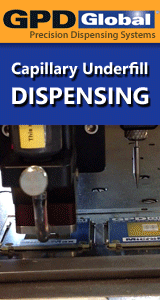Printed Circuit Board Assembly & PCB Design Forum
SMT electronics assembly manufacturing forum.
- SMTnet
- »
- Electronics Forum
- »
- Using parts with Tin Bismuth plating in tin lead soldering
Using parts with Tin Bismuth plating in tin lead soldering
Views: 3355
![]() Hi All was wondering is there anything I should be aware of ...
- Dec 12, 2005
by
Craig
Hi All was wondering is there anything I should be aware of ...
- Dec 12, 2005
by
Craig
![]()
![]()
![]() Bismuth, when used in the correct percentage will not create...
- Dec 12, 2005
by
Bismuth, when used in the correct percentage will not create...
- Dec 12, 2005
by
![]()
![]() Effect of lead on bismuth solders
* Lead from hot air leve...
- Dec 12, 2005
by
davef
Effect of lead on bismuth solders
* Lead from hot air leve...
- Dec 12, 2005
by
davef
![]()
![]()
![]() Dave, thanks for the info, and I, too, have heard all of the...
- Dec 13, 2005
by
Dave, thanks for the info, and I, too, have heard all of the...
- Dec 13, 2005
by
![]()
![]() Your response is from the point of view of using a Bismuth s...
- Dec 13, 2005
by
muse
Your response is from the point of view of using a Bismuth s...
- Dec 13, 2005
by
muse
![]()
- SMTnet
- »
- Electronics Forum
- »
- Using parts with Tin Bismuth plating in tin lead soldering







